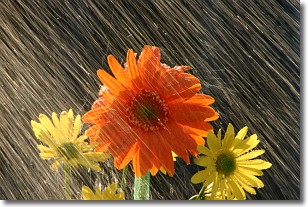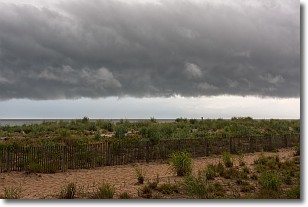Weather Alert in Texas
Hydrologic Outlook issued July 2 at 3:54PM CDT by NWS Brownsville TX
AREAS AFFECTED: Brooks, TX
DESCRIPTION: ESFBRO The Brownsville Texas National Weather Service Office has implemented Advanced Hydrologic Prediction Service (AHPS) for the Los Olmos Creek basin in deep South Texas. AHPS enables the National Weather Service to provide long-range probabilistic outlooks. This service is also available on the internet. In the table below...the 90 through 10 percent columns indicate the chance the creek could rise above the listed stage levels in the next 90 days. Example: The Los Olmos Creek near Falfurrias has a flood stage of 11 feet. There is a 50 percent chance the Falfurrias forecast point will rise above 2.5 feet during the next 90 days. Chance of Exceeding Stages at Specific Locations Valid [07/02/2025 - 09/30/2025] Location FS(FT) 90% 80% 70% 60% 50% 40% 30% 20% 10% -------- ----- --- --- --- --- --- --- --- --- --- Los Olmos Creek Falfurrias 11.0 2.1 2.1 2.1 2.1 2.5 2.9 3.6 4.2 5.3 This long-range probabilistic outlook contains numbers that are calculated using multiple scenarios from 50 years of historical climatological and stream flow data. These numbers also take into account current conditions of the creek and soil moisture. By providing the complete range of probabilistic numbers...the level of risk associated with the long-range planning decisions can be determined. Additional supportive data and explanation are available on the internet at: http://water.weather.gov/ahps2/long_range.php?wfo=bro Long range probabilistic outlooks are issued around the third Thursday of every month.
INSTRUCTION: N/A
Want more detail? Get the Complete 7 Day and Night Detailed Forecast!
Current U.S. National Radar--Current
The Current National Weather Radar is shown below with a UTC Time (subtract 5 hours from UTC to get Eastern Time).

National Weather Forecast--Current
The Current National Weather Forecast and National Weather Map are shown below.

National Weather Forecast for Tomorrow
Tomorrow National Weather Forecast and Tomorrow National Weather Map are show below.

North America Water Vapor (Moisture)
This map shows recent moisture content over North America. Bright and colored areas show high moisture (ie, clouds); brown indicates very little moisture present; black indicates no moisture.

Weather Topic: What is Precipitation?
Home - Education - Precipitation - Precipitation
 Next Topic: Rain
Next Topic: Rain
Precipitation can refer to many different forms of water that
may fall from clouds. Precipitation occurs after a cloud has become saturated to
the point where its water particles are more dense than the air below the cloud.
In most cases, precipitation will reach the ground, but it is not uncommon for
precipitation to evaporate before it reaches the earth's surface.
When precipitation evaporates before it contacts the ground it is called Virga.
Graupel, hail, sleet, rain, drizzle, and snow are forms of precipitation, but fog
and mist are not considered precipitation because the water vapor which
constitutes them isn't dense enough to fall to the ground.
Next Topic: Rain
Weather Topic: What are Shelf Clouds?
Home - Education - Cloud Types - Shelf Clouds
 Next Topic: Sleet
Next Topic: Sleet
A shelf cloud is similar to a wall cloud, but forms at the front
of a storm cloud, instead of at the rear, where wall clouds form.
A shelf cloud is caused by a series of events set into motion by the advancing
storm; first, cool air settles along the ground where precipitation has just fallen.
As the cool air is brought in, the warmer air is displaced, and rises above it,
because it is less dense. When the warmer air reaches the bottom of the storm cloud,
it begins to cool again, and the resulting condensation is a visible shelf cloud.
Next Topic: Sleet
Current conditions powered by WeatherAPI.com




